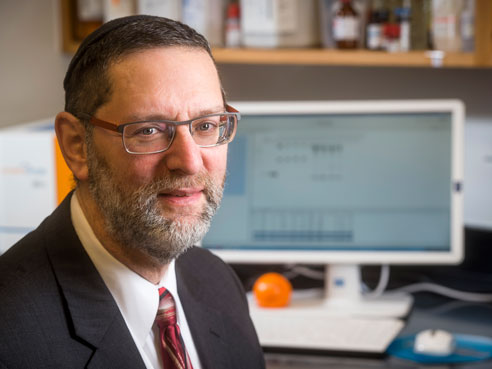 Steven Pittler, Ph.D., director of the UAB Vision Science Research Center and P30 principle investigator.The University of Alabama at Birmingham has been awarded a $2.94 million National Eye Institute Center Core Grant to support and enhance the 15 eligible R01 grants in the UAB School of Optometry and Department of Ophthalmology.
Steven Pittler, Ph.D., director of the UAB Vision Science Research Center and P30 principle investigator.The University of Alabama at Birmingham has been awarded a $2.94 million National Eye Institute Center Core Grant to support and enhance the 15 eligible R01 grants in the UAB School of Optometry and Department of Ophthalmology.
“Over the past 39 years, UAB has continued through basic science innovation to improve eye care for patients through this longest-running P30 grant in the school,” said Steven Pittler, Ph.D., director of the UAB Vision Science Research Center and P30 principle investigator. “The grant provides funding to support our lab managers and provide equipment and other resources needed to advance our research.”
UAB houses four cores devoted to progressing research in ocular disease, including molecular and cellular analysis, instrumentation, research programing, and computational analysis and ocular phenotyping. Vision research at UAB is focused on dry eye disease, hereditary retinal degeneration, age-related macular degeneration, glaucoma, cataracts, myopia, brain visual pathways, traumatic brain injury and ocular imaging.
| Key research funded by UAB’s past P30 grant: |
The grant helps the group of investigators enhance their research, consolidate resources, avoid duplication of efforts and/or contribute to cost effectiveness by providing a service with lower cost or higher quality than could be attempted for independent projects by several individual principle investigators.
Faculty in leadership roles on the grant are Pittler; Paul Gamlin, Ph.D., professor in the UAB Department of Ophthalmology and P30 Co-PI; Lawrence Sincich, Ph.D., associate professor in UAB Vision Sciences; Timothy Kraft, Ph.D., professor and chair of the UAB Department of Optometry and Vision Science; Crawford Downs, professor and vice chair for Research in the Department of Ophthalmology; Marina Gorbatyuk, associate professor in the Department of Optometry and Vision Science; Christine Curcio, professor in the UAB Department of Ophthalmology; and Yuhua Zhang, assistant professor in the Department of Ophthalmology. In addition to 14 other faculty participants on the grant, the VSRC has more than 50 other members who also have access to the cores.